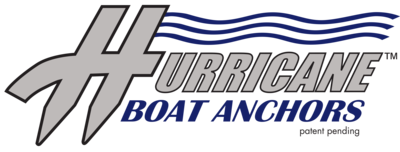Why Do I Need Anchor Chain? How Much Anchor Chain Do I Need?
Note: The information presented here is general information for anchoring in conditions up to 30 mph winds. When winds exceed 30 mph, extreme caution must be taken and short scopes are never recommended.
Always use a minimum of 5:1 scope in extreme conditions, and be sure all your ground tackle can handle the anticipated loads.
Similar to choosing the right size boat anchor, the amount of anchor chain you need can also depend on several things, such as:
-Boat length, weight, and beam
-Boating locations - inshore/offshore, or on lakes, rivers, etc
-Conditions: Will you anchor overnight, or just during day trips? Are you close enough to return to shore if the weather takes a turn for the worse?
-Water depth - for extremely deep water, using longer lengths of chains can help the anchor set faster, and with less line let out. This could make a big difference in deep water when letting out 100-200+ feet of line.
Why Anchor Chain is important
Using chain on any anchor is the most important part of the entire anchoring system. While some manufacturers might claim their anchor does not require chain, decades of anchoring research and testing prove otherwise. Typically these are low-grade anchors, and used by boaters in kayaks, or on smaller bodies of water, where the forces on the anchors are minimal, and using chain won’t make much of a difference.
Benefits:
-Chain allows the anchor to set faster and more reliably by creating a downward pull on the anchor handle (also referred to as the shank).
-Helps the rode to lie horizontally once set, rather than be pulled upward and loosen the anchor.
-Protects your nylon line from debris or other sharp objects underwater that could potentially lead to a cut line, and losing an anchor.
-Allows the breakaway release method to be utilized and minimize the chance of losing an anchor stuck under something.
-Transfers the energy to the very end of the anchor handle, and in a downward motion. In a sense, adding 4 feet of chain to an anchor is like extending the handle by 4 feet. Since that certainly isn’t practical, one can imagine though the type of leverage that would be gained from a handle that long.
Types of chain
-Hot Dip Galvanized (HDG) - this chain is the preferred type of chain for anchors because of its high corrosion resistance. The only chain more corrosion resistance than HDG is Stainless Steel chain, but is 2-3x the price and not as readily available.
-Zinc Plated - Generally sold as an “all purpose chain” at hardware stores. This is not recommended for anchors, or any marine environment. The chain is much more shiny than HDG, however it will typically begin to rust after 1 month or less in any marine environment. Cost is typically about 50 cents less per foot than HDG, and thus HDG is preferred.
-Vinyl Coated Chain (VCC) - originally meant for playgrounds and swingsets, VCC is only recommended if you replace it each year. Typically the coating will wear off after one season, exposing the uncoated bare steel chain, which will rust the first time it touches water.
Also, VCC does not allow the links to move as independently as HDG chain. VCC is typically stiff, so the sagging effect of the chain (known as catenary) to keep the anchor line, and anchor itself down, is not utilized with VCC.
Using More Chain
Using a longer length of chain will not affect the performance of your Hurricane Boat Anchor. In fact, some larger cruisers (30+ feet) have an all chain rode.
For example, on a 24’ boat, instead of using our typical minimum of 4-6 feet, by using longer lengths such as 6-12 feet, you can now use the anchor at a shorter scope, which can be especially beneficial in crowded areas, or very deep water.
Note: If you anchor frequently in areas where it is highly likely to lose an anchor in the rocks, we do not recommend using more than a total of 6 feet of chain - even if you rig the anchor up for the breakaway release.
The reason is that a long length of chain is more likely to get caught in between rocks and debris when lying on the bottom, and not allow you to release it. Typically the anchor rope will not get hung up in rocks and debris.
Having more chain can also help to compensate if using a smaller anchor
For example, your 22 foot boat does not have enough storage space to fit the 14 lb anchor. You can choose to go with the 10 lb model, and rather than only using the 3-4 foot minimum chain, increase that to 8-12 feet for offshore use, and 6-10 feet for lakes & rivers. The extra chain will help keep the anchor angled down more, and increase your holding power.
Note that many fluke/danforth anchors, as well as plow anchors, typically recommend one foot of chain for every foot of the length of your boat. The cutting edge design of the Hurricane Boat Anchor does not require this, however if you already have a long length of chain from your previous rode setup, then it certainly won't hurt anything to use it on your Hurricane Boat Anchor.
If you have any questions regarding anchor chain length, or anchor sizing, please contact us.
Leave a comment
Comments will be approved before showing up.
